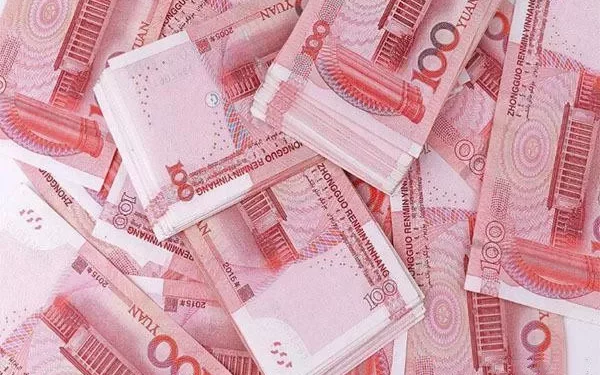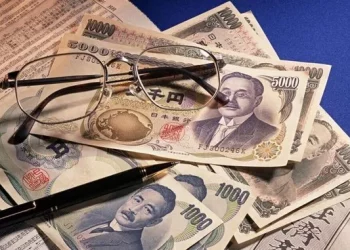The history of currency in China is rich and complex, reflecting the country’s long-standing economic development and cultural evolution. Over thousands of years, China has utilized various forms of money, each reflecting the economic and social conditions of its time. This comprehensive article explores the old Chinese currency systems, detailing their origins, usage, and significance. We will examine the evolution of Chinese currency from ancient times through the imperial period, highlighting key forms of money such as cowrie shells, metal coins, and paper currency.
The Evolution of Chinese Currency
China’s currency history spans several millennia, characterized by significant changes in form and function. Understanding this evolution provides insight into the economic and cultural history of one of the world’s oldest civilizations.
Early Forms of Currency
Cowrie Shells
The earliest form of currency in China was cowrie shells, used as early as the Shang Dynasty (c. 1600–1046 BCE). Cowries were highly valued for their rarity and symbolic significance, and they were used in trade and as a medium of exchange. Their use continued for centuries, reflecting their deep-rooted role in Chinese economic life.
Shell Money and Knife Money
As Chinese society evolved, so did its currency. During the Zhou Dynasty (c. 1046–256 BCE), shell money, which consisted of objects shaped like cowrie shells or actual shells strung together, began to be used more widely. Another notable early currency form was knife money, metal coins shaped like knives or spades. These forms of currency were practical and easier to handle compared to cowrie shells, reflecting the growing sophistication of Chinese trade.
Metal Coinage
Round Coins with Square Holes
By the Warring States period (c. 475–221 BCE) and the early Qin Dynasty (221–206 BCE), the use of metal coins became more prevalent. The most iconic form of ancient Chinese coinage was the round coin with a square hole in the center. This design, which emerged during the Han Dynasty (206 BCE–220 CE), became a standard feature in Chinese currency for many centuries.
The round shape represented the heavens, while the square hole symbolized the earth, reflecting ancient Chinese cosmology. These coins were often made from bronze, and their standardization facilitated trade across the vast Chinese empire. The round coins with square holes were in use for over a millennium, illustrating their enduring significance in Chinese economic history.
Specialized Coins
In addition to standard round coins, various specialized coins were minted for specific purposes. For instance, during the Tang Dynasty (618–907 CE), the government issued large copper coins known as “Kaiyuan Tongbao.” These coins were used to manage the empire’s economic needs and to regulate inflation. The Tang Dynasty’s coinage system was influential and set the stage for future developments in Chinese currency.
Paper Money
Early Paper Money
The concept of paper money in China dates back to the Tang Dynasty (618–907 CE), but it was not until the Song Dynasty (960–1279 CE) that paper currency became widely used. The Song Dynasty was a period of significant economic innovation, and the introduction of paper money marked a major advancement in Chinese currency systems.
The earliest forms of paper money were known as “Jiaozi.” These notes were issued by private institutions and later by the government, representing a significant departure from traditional metal coins. Jiaozi facilitated larger transactions and played a crucial role in the economic development of the Song Dynasty.
Government-Issued Paper Currency
By the Yuan Dynasty (1271–1368 CE), the Mongol rulers introduced government-issued paper currency, known as “Chao.” This form of currency was more standardized and regulated than earlier paper money, and it was backed by the state’s credit. The Yuan Dynasty’s paper currency system was one of the first attempts at creating a unified monetary system in China.
The Ming Dynasty (1368–1644 CE) continued the use of paper money, issuing “Da Ming Baochao” notes. The Ming government faced challenges with counterfeiting and inflation, but the use of paper money remained a significant feature of the economy.
The Significance of Old Chinese Currency
Understanding the old Chinese currency systems provides valuable insights into the economic and cultural history of China.
Economic Impact
Ancient Chinese currency played a critical role in facilitating trade and commerce. The transition from cowrie shells to metal coins and eventually to paper money reflected the increasing complexity of Chinese economic life. Each form of currency addressed specific economic needs, from facilitating small-scale transactions to managing large-scale trade.
See Also: Is SWIFT Using CNH or CNY?
The use of standardized metal coins and paper money helped to create a more unified economic system across China’s vast territory. This standardization enabled easier trade and contributed to the growth of the Chinese economy.
Cultural and Symbolic Significance
Currency in ancient China was not just a medium of exchange but also held cultural and symbolic significance. For example, the round coins with square holes represented the harmony between heaven and earth, reflecting the ancient Chinese worldview.
Paper money, on the other hand, represented a significant shift in economic thinking and technological advancement. The use of paper currency demonstrated the evolving nature of Chinese society and its ability to adapt to new economic challenges.
Influence on Modern Currency Systems
The innovations in Chinese currency systems had a lasting impact on monetary practices both within China and beyond. The concept of paper money, first developed in China, eventually spread to other parts of the world, influencing the development of modern banking and financial systems.
The Legacy of Old Chinese Currency
The old Chinese currency systems have left a lasting legacy in China’s economic and cultural history. The evolution of Chinese currency reflects the broader historical trends and innovations that shaped the country’s development.
Historical Artifacts
Ancient Chinese coins and paper money are valuable historical artifacts that provide insights into the economic practices and cultural values of different periods. These artifacts are often studied by historians and archaeologists to better understand China’s economic history and the evolution of its currency systems.
Collectibles and Numismatics
Old Chinese currency has become a popular field of study and collecting. Numismatists and collectors value ancient Chinese coins and paper money for their historical significance and aesthetic qualities. Collecting old Chinese currency offers a tangible connection to the past and helps preserve the rich heritage of Chinese monetary systems.
Educational Value
Studying old Chinese currency provides valuable lessons in economics, history, and cultural development. Understanding the evolution of currency systems helps to appreciate the complexity of economic practices and the role of innovation in shaping societies. Educational programs and resources that focus on ancient Chinese currency contribute to a broader understanding of China’s historical and economic development.
Conclusion
The old Chinese currency systems, from cowrie shells and metal coins to paper money, reflect the rich and diverse history of China’s economic and cultural development. Each form of currency played a crucial role in facilitating trade, managing economic growth, and reflecting the values and beliefs of its time. By exploring the history and significance of old Chinese currency, we gain a deeper appreciation for the innovations and achievements that have shaped China’s economic history and continue to influence modern financial systems.
Related Topics:



























